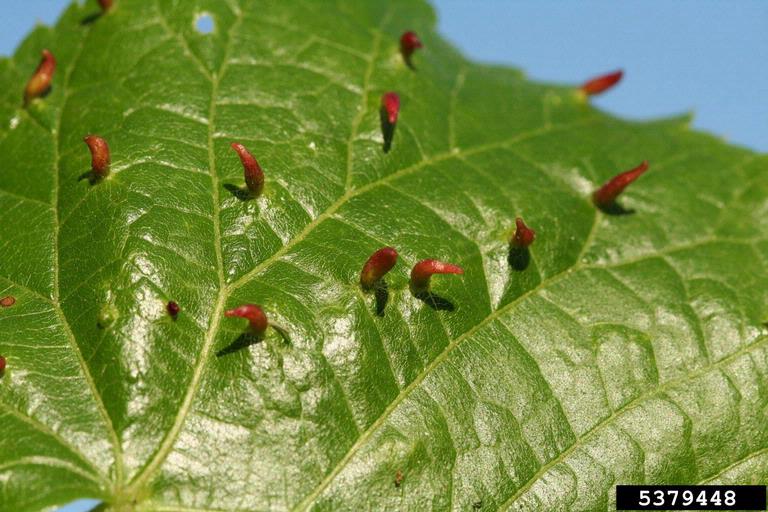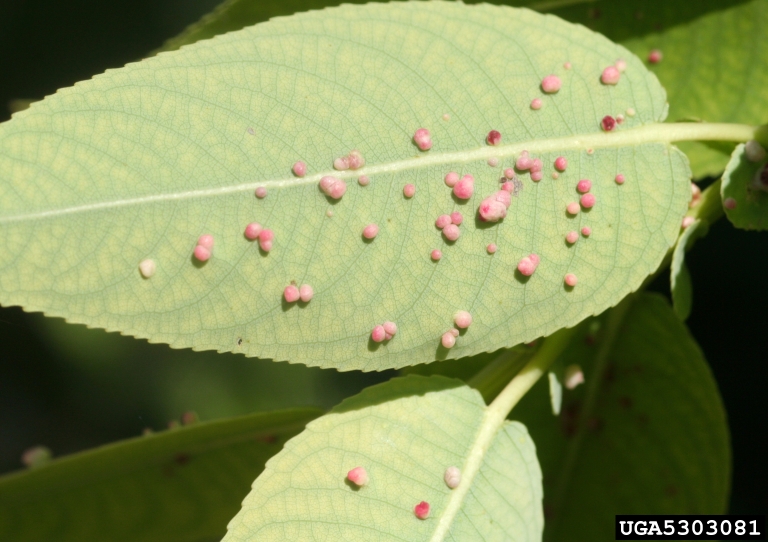Integrated Pest Management
Fingergall and Pouchgall Mites
Eriophyes negundi; Phytoptus emarginata
Pest Description
- minute, four-legged, cigar-shaped mite; opaque white to yellow in color
- microscope or hand lens required to see mites; use symptoms for identification
- there are many finger and pouchgall mites that affect other plants/trees
Host Plants, Diet & Damage
Boxelder Pouchgall Mite
- boxelder leaves
- galls are raised green domes on the top of the leaf
Chokecherry Fingergall Mite
- chokecherry and other Prunus spp. leaves
- fingerlike galls scattered randomly on leaf surfaces; turn yellowish to light brown
Biology, Life Cycle & Damaging Life Stage
- overwinter in budscales
- emerge from budscales in spring just prior to budbreak
- migrate from buds to feed on new leaves in spring
- migrate back to buds in the fall
- immatures and adults are damaging
IPM Recommendations
- Damage is aesthetic; tolerate pest.
- Apply horticultural oils at budbreak to target migrating mites.
- Apply an insecticide (avermectin; carbamate; METI acaracide; insecticidal soap; lime sulfur; tetronic and tetramic acid derivatives) at or just prior to budbreak.
- Do not use horticultural oils in combination with, or within 30 days of applying sulfur or a sulfur-containing product.
For more information, see our Eriophyid Mites fact sheet.




